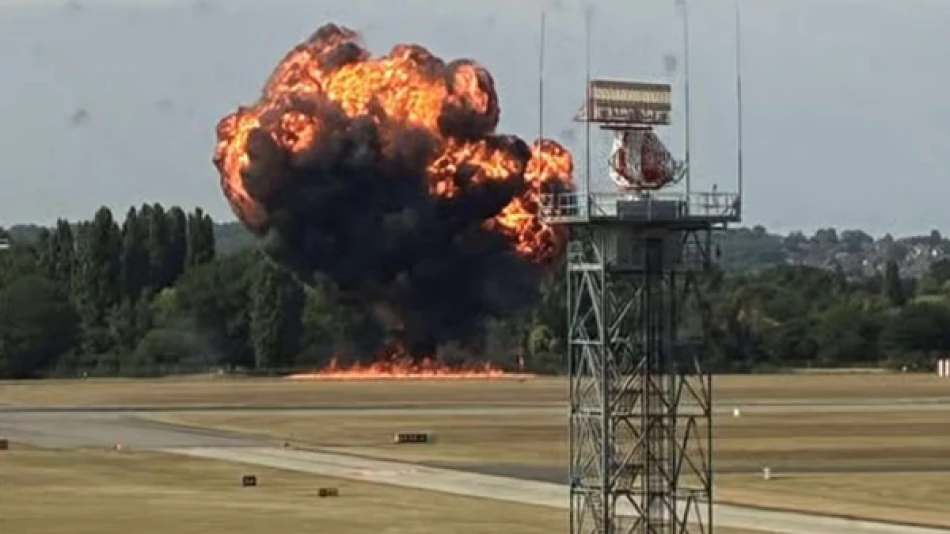
Tragic Plane Crash in UK Leaves Casualties
Four Dead in Small Aircraft Crash at London Southend Airport as Operations Remain Suspended
A fatal aircraft accident at London Southend Airport has claimed four lives, forcing the closure of a key regional gateway that serves as a vital link between London and European holiday destinations. The tragedy highlights ongoing safety challenges facing smaller airports that have become increasingly important to budget airline operations across the UK.
The Incident and Immediate Response
The small aircraft crashed at London Southend Airport on Sunday, killing all four people on board, according to PA Media reports released Monday. Airport authorities have kept the facility closed following the accident, disrupting operations at what has become a significant hub for budget travel.
Located 56 kilometers east of central London, Southend Airport has transformed from a relatively minor airfield into a crucial component of the UK's aviation infrastructure, particularly for low-cost carriers seeking alternatives to congested Heathrow and Gatwick airports.
Strategic Importance of Southend Airport
Budget Airline Operations Hub
The airport's closure carries particular significance given its role as a EasyJet operational base, serving numerous European tourist destinations. This positioning reflects a broader trend across European aviation, where secondary airports have gained prominence as budget carriers seek cost-effective alternatives to major hubs.
Southend's growth mirrors similar developments at airports like London Luton and Bristol, which have capitalized on the budget airline boom of the past two decades. The facility's extended closure could force airlines to reroute flights through already congested London airports, potentially causing ripple effects across European travel networks.
Aviation Safety Implications
Small Aircraft Risks at Commercial Airports
The incident underscores the complex safety dynamics at airports that handle both commercial passenger flights and smaller private aircraft. While commercial aviation maintains exceptional safety records, general aviation—encompassing private planes and small aircraft—faces different risk profiles and regulatory frameworks.
UK aviation authorities have increasingly focused on safety protocols at regional airports, particularly as passenger volumes have grown. The Civil Aviation Authority's oversight of facilities like Southend has intensified following the expansion of budget airline operations, which often operate with tighter margins and higher frequency schedules.
Economic and Operational Impact
The airport's closure creates immediate challenges for EasyJet and other carriers that rely on Southend's capacity, particularly during peak travel periods. Budget airlines typically operate with limited flexibility in their route networks, making sudden airport closures particularly disruptive to both operations and passenger bookings.
This disruption comes at a time when European aviation is still recovering from pandemic-related challenges and facing new pressures from environmental regulations and fuel costs. Regional airports like Southend have been crucial to this recovery, offering airlines lower operating costs and reduced congestion compared to major hubs.
Looking Ahead
The investigation into this crash will likely examine not only the immediate causes but also broader questions about safety protocols at mixed-use airports handling both commercial and general aviation traffic. The findings could influence regulatory approaches across the UK's network of regional airports, many of which have expanded rapidly to accommodate growing budget airline operations.
For the aviation industry, the incident serves as a reminder of the delicate balance between operational efficiency and safety oversight that underpins modern air travel, particularly at the secondary airports that have become increasingly vital to European connectivity.
Most Viewed News

 Layla Al Mansoori
Layla Al Mansoori






